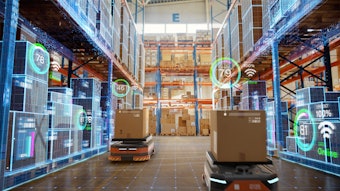
2025 is already shaping up to be quite the year. Here’s an outline of Top 5 logistics and crowdsourced predictions for the year ahead.
Prediction 1: Fraudulent returns will spur innovation in returns management
● E-commerce retailers are losing billions of dollars due to fraudulent returns. There will be a shift toward solutions that tackle this issue directly, including unboxed returns models where items are picked up directly from the consumer’s doorstep without requiring repackaging.
● More companies will begin to use AI-powered image recognition to confirm that the correct item is being returned (i.e. a blue sweatshirt), preventing fraudulent returns by catching discrepancies between what's supposed to be returned and what's actually being returned.
Prediction 2: The “exchange economy” will take off
● Consumers and retailers alike are looking for more convenient return solutions. In 2025, we can expect to see a shift toward exchange models, where customers can easily swap items like clothing or footwear without the need for a full return.
● The "try-before-you-buy" model will also likely become more mainstream, driven by increasing consumer demand for convenience and flexibility in e-commerce. This will help reduce friction in the returns process while increasing customer satisfaction.
Prediction 3: Big and bulky deliveries will see efficiency gains
● Handling large deliveries like furniture and appliances has always been a challenge in logistics, but further improvements are expected through the expansion of hub-and-spoke networks and the integration of cross-docking facilities and sortation centers.
● Cross-docking and sortation centers will play a critical role in streamlining big and bulky returns, reducing handling times and costs for oversized items.
● The introduction of technologies like radio frequency identification (RFID) and exoskeletons will help companies manage bulky items more effectively. For instance, RFID technology could allow for quicker inventory checks and more efficient handling, reducing the time and labor costs associated with managing large deliveries, while the introduction of exoskeleton technology in warehouse operations can minimize physical strain on workers by reducing the lift load by up to 15%.
Prediction 4: Equitable practices will drive success in the evolving gig economy landscape
● As the gig economy evolves, platforms that empower drivers with choices and offer transparency and control, will stand out and thrive. Providing clear information on delivery details and earnings will attract and retain gig workers – fair treatment and flexibility will be key to staying competitive.
Prediction 5: AI will elevate predictive logistics and proactive problem-solving
● In 2025, AI will further improve customer service by providing immediate answers to common queries like “Where’s my delivery?” and optimizing delivery times.
● Automation will streamline driver management and troubleshooting by optimizing routes and resolving driver-related issues like accessing gated locations or dealing with delivery disruptions such as flat tires.
● As AI tools mature, crowdsourced delivery platforms will deploy advanced solutions for driver support to better streamline interactions, reducing the need for drivers to contact a live support agent for simple inquiries and allowing them to focus on completing deliveries efficiently.

























